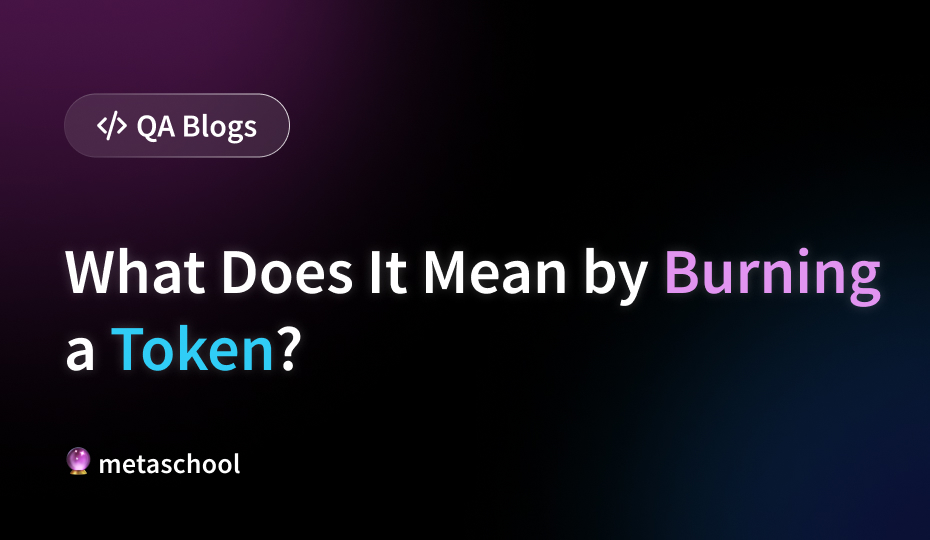Table of Contents
Imagine a world overflowing with limited-edition trading cards. The more scarce a card is, the more valuable it becomes, right? Token burning in the realm of cryptocurrency works on a similar principle. It’s a process specifically designed to reduce the overall supply of a particular token, potentially influencing its value.
But how exactly does burning work, and why would anyone intentionally destroy tokens? Buckle up, because we’re diving into the fiery world of token burning!
What Does Burning a Token Mean?
In the world of cryptocurrencies, tokens aren’t physically destroyed like burning a trading card. Instead, burning refers to the permanent removal of tokens from circulation. This typically involves sending them to a special wallet address – often referred to as a “burn address” or “eater address.” This address is unassociated with any private key, essentially making the tokens irretrievable and effectively taking them out of the equation.
Why Burn Tokens? Developers Unleash the Flames
There are several reasons why developers might choose to burn tokens:
- Scarcity and Potential Value Increase: By reducing the overall supply of tokens, burning can create scarcity, similar to how limited-edition items hold more value. This scarcity could potentially drive the price of the remaining tokens up, benefiting holders.
- Deflationary Measures: Burning can help combat inflation within a cryptocurrency’s ecosystem. Inflation, in this context, refers to the gradual increase in the total number of tokens in circulation. By burning tokens, developers can counteract this inflationary effect.
- Token Utility Management: Some projects have tokens that serve specific utilities within their ecosystem. Burning a portion of these tokens used for fees or other functionalities can help regulate their supply and prevent overcirculation.
- Governance and Treasury Management: In certain projects, a portion of the tokens might be allocated for governance purposes or held in a treasury. Burning some of these tokens can demonstrate transparency and commitment to a sustainable token economy.
🔥 Check this course out: Build a One Piece Personality dApp With Solidity
Examples of Token Burning in Action
Let’s see some real-world examples of token burning in action:
- Binance Coin (BNB): Binance, a popular cryptocurrency exchange, has a buyback and burn program where they use a portion of their profits to repurchase BNB tokens and burn them. This reduces the total supply of BNB, potentially increasing its value for holders.
- Tether (USDT): Tether, a stablecoin pegged to the US dollar, occasionally burns tokens to maintain its peg. If there’s an excess of USDT tokens in circulation, burning some can help maintain the 1:1 ratio with the US dollar.
The Burning Debate: A Double-Edged Sword
While token burning offers potential benefits, it’s not without its critics. Here are some things to consider:
- Not Guaranteed Price Increase: Burning doesn’t automatically guarantee a price increase for the remaining tokens. Market forces and overall project adoption play a significant role in determining value.
- Centralization Concerns: In some cases, token burning can lead to increased centralization if the developers hold a large portion of the tokens and decide which ones to burn. This can raise concerns about manipulation.
- Transparency is Key: For burning to be effective, it needs to be done transparently. Developers should clearly communicate their burning strategy and rationale to the token holder community.
🔥 Check this course out: Build a Semi-Fungible ERC404 Tokens’ Marketplace
Burning Bright: A Tool for a Maturing Market
Token burning is a tool that’s still evolving in the cryptocurrency space. While it can be a way to influence scarcity and potential value, it’s important to understand its limitations and drawbacks. As the crypto market matures, token burning will likely continue to be a topic of discussion and innovation.
Remember: Burning tokens is a strategic decision made by project developers. It’s crucial to research the specific reasons behind a project’s burning strategy before making any investment decisions.
Try it out, ask us questions, and tell us how it went by tagging Metaschool on Social Media.
Follow us on –
🔮Twitter – https://twitter.com/0xmetaschool
🔗LinkedIn – https://www.linkedin.com/company/0xmetaschool/
